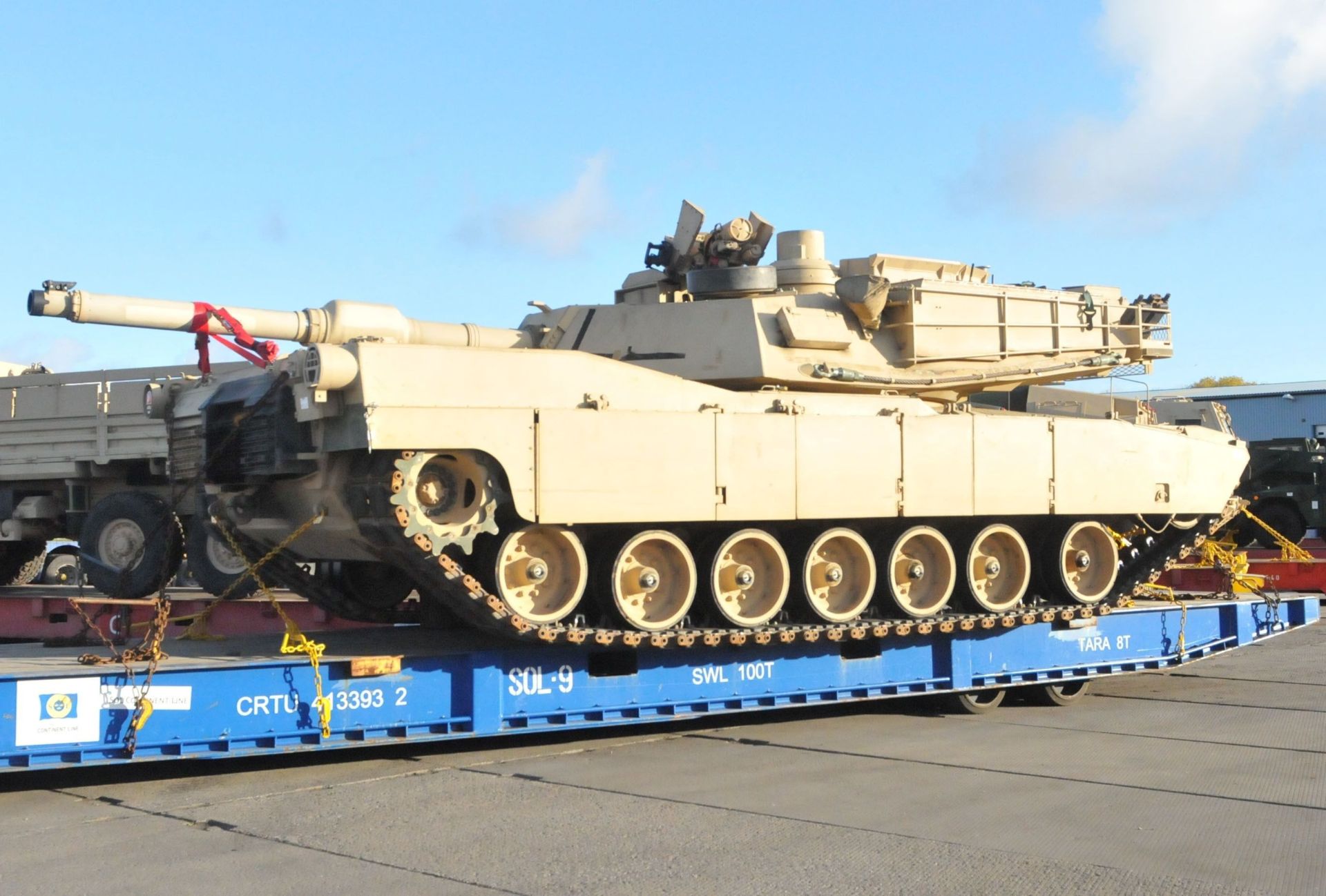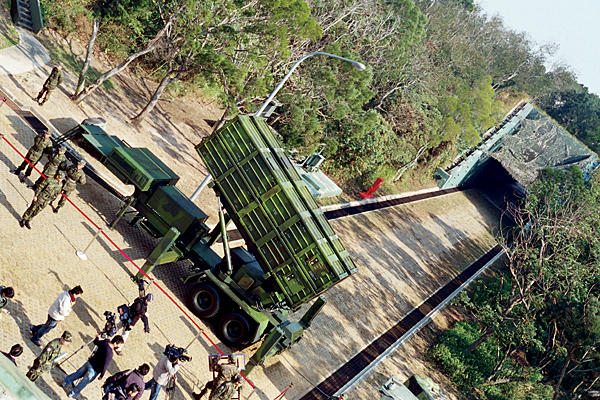GRAFENWOEHR, Germany: As the Regionally Allocated Force for U.S. Army Europe, the 1st Armored Brigade Combat Team, 3rd Infantry Division has been conducting multinational training exercises throughout nine countries, spread out over 3,800 kilometers from the Baltics to Spain.
One of the biggest challenges throughout the rotation was moving the brigade’s heavy armored equipment throughout Europe to conduct these exercises.
Other units in Europe, like the 2nd Cavalry Regiment, are able to use organic assets to move their equipment throughout the European theatre. Exercises like Dragoon Ride, which saw troopers from 3rd Squadron, 2nd Cav. Regt. road march more than 1,000 miles from the Baltics to Germany, have demonstrated the U.S. Army has the freedom to move military equipment throughout Europe.
But as the only Armored Brigade Combat Team in Europe, road marches are not an option for the 1st Brigade. The heavy tracked vehicles would cause too much damage to the roads and local infrastructure while also disrupting the daily lives of the locals.
Being unable to road march means the brigade must move equipment and people by rail, line-haul, boat and air. The herculean task of coordinating all of these movements is the responsibility of the 3rd Brigade Support Battalion’s Support Operations Transportation section.
“A Stryker Combat Team can do ground convoy movements on their own, and have in the past,” said Capt. Anthony Else, the brigade SPO Transportation Officer. “A lot of our movements are by train and using the local infrastructure.”
By the time the Raider Brigade redeploys to Fort Stewart, Georgia, over a 3-month rotation the brigade will have traveled over 70,000 kilometers of track for rail movements, 13,000 kilometers of pavement for line-haul missions, shipped cargo on 10 different vessels and moved soldiers and equipment on more than 50 flights.
All these movements require a considerable amount of coordination, planning, and resources, especially when crossing international borders.
“We have certain reporting guidelines for moving heavier armored track vehicles across international borders,” said 1st Lt. John Nelson, the assistant SPO Transportation Officer and a Miami native. “M1A2 [Abrams Main Battle Tanks], M2 [Bradleys], and M109 [Paladins] are affected greatly by the Weapons of War Act, so it takes a lot of prior planning to move this equipment and needs to be at least six weeks out or more.”
Lt. Gen. Ben Hodges, the commander for U.S. Army Europe, has recently suggested NATO countries adopt a military-type Schengen zone, referring to the European Union agreement that allows free travel among EU member countries. This would allow NATO forces to have prearranged coordination to move military equipment across NATO borders, eliminating some of the diplomatic clearances and allowing forces to move back and forth within the Alliance quicker.
“That would be awesome,” said Nelson, referring to a military-type Schengen zone. “Currently the backwards planning for moving into some countries is pretty intense, especially when we only have 3-month RAF cycles, so we need a lot of lead-time to complete these [movement] tasks. If we are half-way through a [3-month] deployment, and need to move through Poland, that move would have to be planned as soon as we arrive in country.”
The brigade is not facing these challenges alone, though, as the 18th Combat Sustainment Support Battalion has two Movement Control Teams assisting the brigade, with one team in the Baltics and another in the Balkans.
“They have been very helpful with supporting our soldiers,” said Else, a native of Palos Heights, Illinois. “They do all the functionality we would normally do ourselves, but over the distance, we can’t provide as locally as they can. It’s been very helpful.”
Also benefiting the brigade is the announcement that U.S. Army Europe and Army Materiel Command are storing portions of the European Activity Set at three initial forward locations in Bulgaria, Romania and Lithuania. Having EAS equipment spread throughout Europe means Regionally Allocated Forces will be able to access the equipment when and where it is needed for training exercises as a part of Operation Atlantic Resolve.
For Else, though planning the movement of the brigade’s equipment throughout the rotation has been demanding, the experience his team has received unquestionably has set them up for future success.
“It’s built the functional angle for learning transportation stuff,” said Else. “There’s a lot of experience gained just by the sheer volume of what we’re doing. We’re doing so much out here that you get a lot of practice.”
Nelson has taken advantage of the increased responsibilities over the last two RAF rotations in the SPO shop, having to make decisions someone with his rank and position normally would not make.
“Being a lieutenant in the SPO-Trans shop, I need to be very well synced in what’s happening in our brigade’s movement plan,” said Nelson. “I’m left with making decisions a lot of times on behalf of the battalions, due to timelines and when they are out in the field training, I need to be able to assess their redeployment and deployment schedules and be able to make a decision that meets their battalion commander’s intent.”
For Else, the important thing is capturing all this experience and help future rotations avoid making some of the same mistakes.
“We’re building our own internal SOP [Standard Operating Procedure] that will have everything outlined, to include sample forms, flowcharts of how the information moves, and the processes that we have, so that the next people that come will have the benefit of some of our lessons learned,” said Else.
The brigade’s motto throughout this latest rotation has been to “get better every day.” The soldiers from the SPO shop have done just that.
“Our SPO shop has been phenomenal,” stated Else. “Synchronizing all these movements across theater is a big challenge, and I’m just really proud of the team.”











